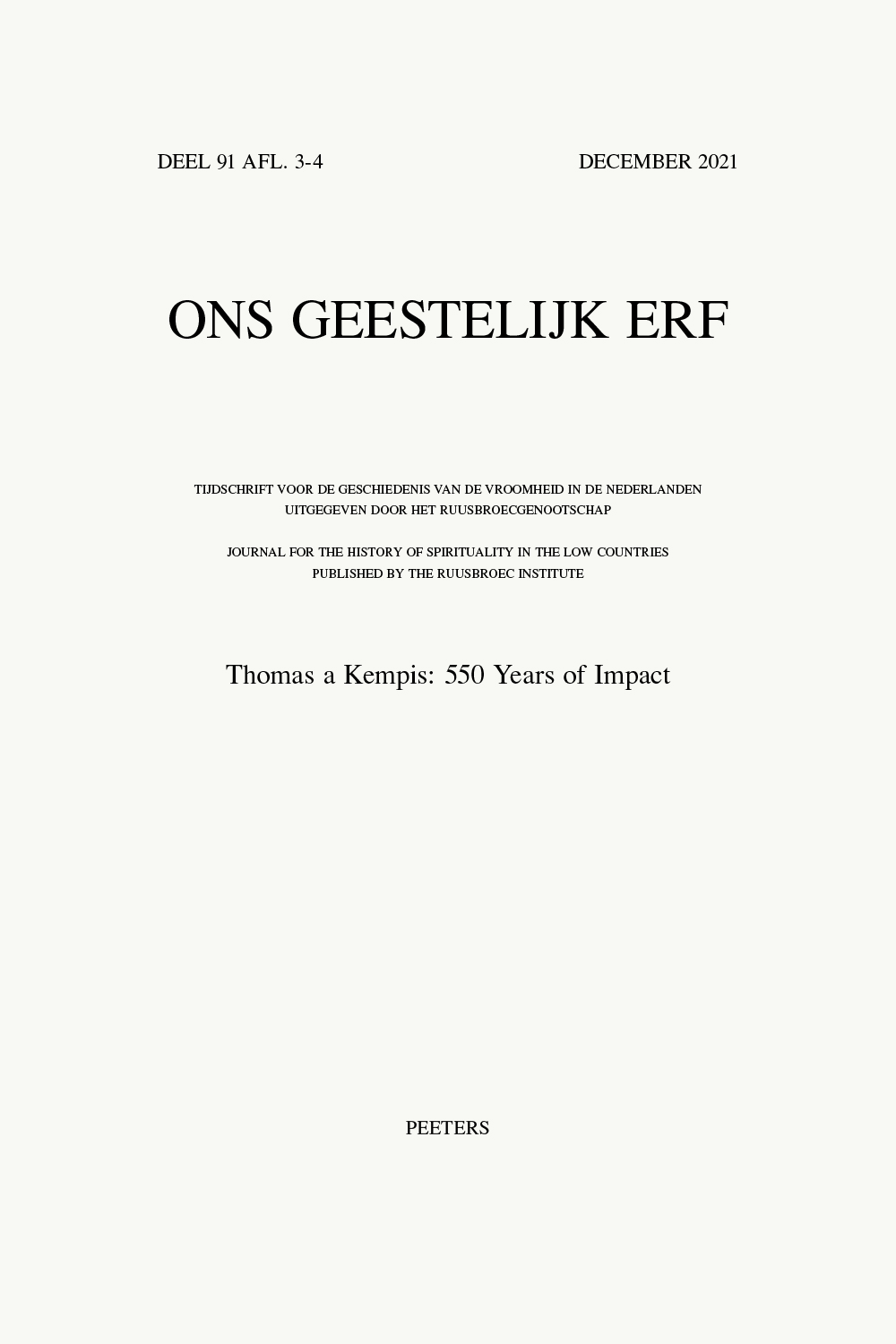 previous article in this issue previous article in this issue | next article in this issue  |

Preview first page |
Document Details : Title: The Mystical Dimension in Flemish Primitive Painting Subtitle: Exploring the Spiritual Affinity between John of Ruusbroec and Rogier van der Weyden Author(s): BEKAERT, Edward Journal: Ons Geestelijk Erf Volume: 82 Issue: 4 Date: December 2011 Pages: 333-392 DOI: 10.2143/OGE.82.4.2144970 Abstract : The point of departure of this article is Falkenburg’s suggestion (in M.W. Ainsworth (ed.), Early Netherlandish Painting at the Crossroads. A Critical Look at Current Methodologies, New York, The Metropolitan Museum of Art, 1998, p. 2) to study late medieval devotional texts in the vernacular as a possible key to a richer understanding of Early Netherlandish painting. Concretely, Die geestelike brulocht, one of the most copied works of the Flemish mystic John of Ruusbroec (1293-1381), is confronted with a selection of paintings by Rogier van der Weyden (c. 1399-1464) in order to tackle a question that has hitherto not been raised properly: Is there, in addition to the various layers of meaning already discussed by art critics, a mystical dimension in the paintings of this Flemish Primitive painter? In the first part of the article, the Carthusians are situated at the crossroads of textual and visual culture in the Late Middle Ages by indicating their historical ties with the mystical author John of Ruusbroec and master painter Rogier van der Weyden. Two conclusions are drawn from this. First, it is evident that Van der Weyden’s preference for Passion scenes in his work was influenced by Carthusian spirituality. Secondly, the intuitive bond between Van der Weyden’s oeuvre and Ruusbroec’s mystical theology can be explained in part by the affinity of both painter and writer for the Carthusians. More importantly, it is demonstrated that it is plausible that Rogier van der Weyden came into direct contact with the works of John of Ruusbroec via the Carthusians. The second part of the article discusses each of the four core issues of Die geestelike brulocht (See, / the Bridegroom cometh; / go out / to meet Him) in order to draw an outline of the three levels of spiritual life (active, interior and contemplative life). The same four thematic angles are subsequently used to readdress a selection of Van der Weyden’s paintings. The results of this confrontation are at once too hypothetical and too easily challenged by alternative interpretations to be able to state positively that Ruusbroec’s mystical theology was one of the spiritual sources of Van der Weyden’s art. Yet, this clearly defined test case generates enough new and interesting insights to substantiate the plausibility of a mystical dimension in the paintings of Rogier van der Weyden. |
|


